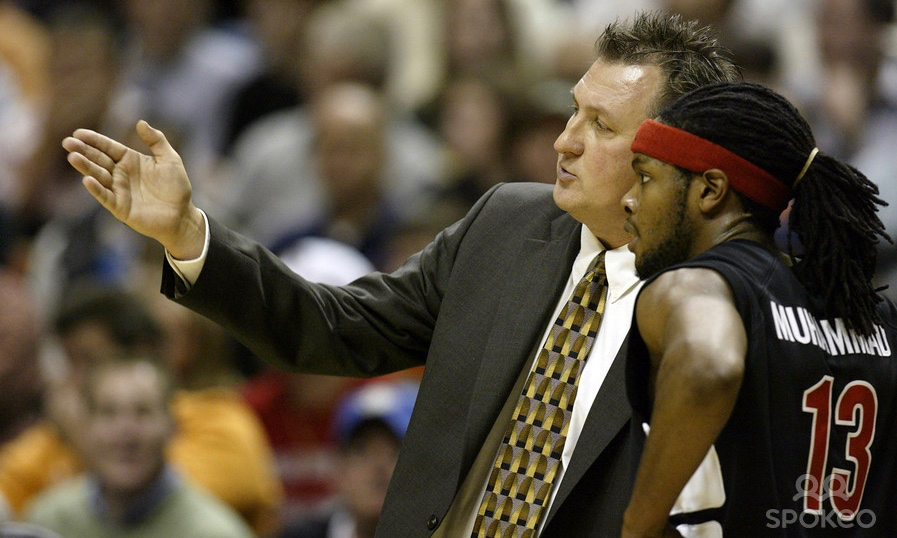While the Bearcats team currently dwells in the American Athletic Conference (hear our pleas Big 12), it has had a very rich history. From the Oscar Robertson days to the back-to-back championships (yeah, they won back-to-back titles AFTER Oscar left), to the Bob Huggins era to the Cronin era now, Cincinnati basketball has always been an underrated program in college basketball history.
To put the Bearcats total historical success in perspective, the Bearcats have been ranked #1 in the country 45 different weeks, good for seventh place in history, ahead of more known programs like Arizona (29), UConn (28), Syracuse (17), and Georgetown (12). Cincinnati is also ranked 20th in total program wins, as well at 30th in win percentage. All of these historical stats are great, but in today’s society, we tend to care more about the immediate past. In this article, I will be going over the last 15 years of Bearcat basketball, and oh boy, is it a good 15 years.
The Huggins Era (1999-00 to 2004-05)
While the Huggins era technically started in 1989, for the purposes of this article not being too long (I told you there is a lot of history!!), the 1999-00 season is a great place to start. If you ask any Cincinnati fan what their favorite season of Bearcat basketball was, the likely answer is this year specifically. Why you ask? One man, Kenyon Martin. The consensus player of the year and first team all-American (and future #1 overall draft pick) averaged 18.9 points per game, 9.7 rebounds, and 3.5 blocks while leading UC to a #1 ranking 12 out of the 19 AP polls, and a #2 seed in the NCAA Tournament. Sadly, this team with so much potential hit a wall when Kenyon came down with an injury. UC ended up getting knocked out of the tournament in the second round to Tulsa. After five more good years, and numerous second round tournament exits, the Bob Huggins era came to an abrupt end. Huggins was arrested for a DUI, as well as having some player control issues and the university eventually forced him to resign. Huggins later had a year at Kansas State and is now residing at West Virginia University.
The Kennedy Era (2005-06)
I was thinking about not even giving this “era” it’s own paragraph, but it was the transition between the old and new Bearcats so I think it is an important step even though it gets lost in history. Andy Kennedy was the assistant coach for part of the Huggins era, and after Huggins was dismissed, he became the interim head coach. The part that makes this era important is that it was the first year of Cincinnati being in the Big East after their move from Conference USA. He also took a team with eight freshmen on it and coached them to a respectable 21-13 record and an appearance in the NIT. While you would think this would set the tone for a nice 2006-07 season (and more years of Andy Kennedy coaching)….
The Mick Cronin Era (2006-Present)
… it did not. Kennedy moved on to the University of Mississippi and Cincinnati decided to hire Mick Cronin (a UC grad) from Murray State. The first season of the Cronin era was a shaky one, finishing with a record of 11-19 but with one of those wins coming against intracity rival Xavier. Cincinnati increased their win total each year over the next four years under Cronin, reaching a record of 26-9, including three wins over ranked teams. UC got a 6-seed in the tournament and advanced to the second round before losing to Connecticut. Another 26 win season in 2011-12 and a 22 win season in 2012-13 (in addition to the return of Sean Kilpatrick) led to a lot of hype going into the 2013-14 season. They delivered on this hype, going 27-7 and sharing the regular season title with Louisville. Also during the season, Sean Kilpatrick scored his 2,000th point (a game I was actually at!) to join the great Oscar Robertson as the only UC players to achieve this feat. This earned the Bearcats a #5 seed in the tournament, where they lost to #12 Harvard in the first round. 2014-15 was more of the same under Cronin with 23 wins and a loss in the second round of the tournament (albeit to 36-0 Kentucky). Overall, the Cronin era has been a good one, and should be for years and years to come.
All 2000-2016 Cincinnati Bearcat Team
PG: Steve Logan- One of five All-American selections in Cincinnati Bearcat history, Logan was the go-to player after Kenyon Martin left for the NBA. In his two years after Martin, Logan averaged 17.6 ppg/2.4 rpg/2.3 apg while leading UC to 25 wins and winning the C-USA Player of the Year award. The year after, he really exploded, averaging 22 ppg, 3.1 rpg, and 5.3 apg on his way to winning his second C-USA Player of the Year award. That year, the team won 31 games (and featured THREE players on this list).
SG: Sean Kilpatrick- This man is an example of what can happen if you stay in college to develop for the full four years. Kilpatrick’s freshman year, he averaged 9.7 ppg, 3.2 rpg, and 1.5 apg. Improving each year, he ended his career averaging 20.6 ppg, 4.3 rpg, and 2.5 apg in 2013-14. He was also named a first team All-American. As previously mentioned, Kilpatrick is also the second leading scoring in Bearcat history (2,145 points), trailing only the Big O.
SF: Jason Maxiell- Although he may be more known for being on LeBron’s Heat teams, Maxiell was a really good college player at Cincinnati. While he wasn’t a true small forward, I could not leave him off of this list. Over his career at Cincinnati, he averaged 12.1 ppg, 7.0 rpg, and 0.7 apg highlighted by a 15.3/7.7/0.8 season his senior year. Maxiell was also on some great teams, including the 31-win team in 2001-02.
PF: Kenyon Martin- Could there really have been any other answer? Wooden Award winner. Naismith Award winner. Defensive Player of the Year. He won EVERY player of the year award. He was also a consensus first-team All-American. Martin had a great UC career, and the 1999-00 season only highlighted it. He averaged 18.9 ppg, 9.7 rpg, and 1.4 apg. The year before, he averaged 10.1 ppg, 6.9 prg, and 1.4 apg. Martin was also a big-time shot blocker, averaging 2.5 per game his whole career, including 3.5 per game during his award-winning season.
C: Yancy Gates- Oh man, does this guy have a reputation. Known more for his part in the Xavier fight than his actual play, Gates was actually a very good basketball player for UC. He was a highly-rated recruit coming out of high school (30th on ESPN’s top 100). Gates averaged double digit points in all of his four years in the program, and averaged almost 7 rebounds per game. While Gates was not on any noteworthy teams, he was a consistent player on two NCAA tournament teams.
Bench Players: Leonard Stokes, Eric Hicks, and Deonta Vaughn- I could not get myself to just pick one of these players for the sixth man on this team, so I included all three of them. Stokes had a rough freshman year, but averaged double figures in his next three seasons, ending with career averages of 10.2 ppg, 3.6 rpg, and 1.6 apg. His best season consisted of 15.7 ppg, 4.8 rpg, and 3.2 apg in 2002-03. Eric Hicks also had a rough freshman year, but finished his career with averages of 10 ppg, 7.3 rpg, and 0.6 apg, capped of by averages of 15 ppg, 9.7 rpg, and 0.9 apg his senior year in 2005-06. Finally, we have Deonta Vaughn. He finished his UC career averaging 14.6 ppg (averaged double digits all four years), 3.5 rpg, and 4.0 apg. Perhaps more noteworthy is the fact that Vaughn is the UC career leader in assists, minutes played, games started, 3-point field goals, and 3-point field goals attempted. He also finished third all-time in points scored.







